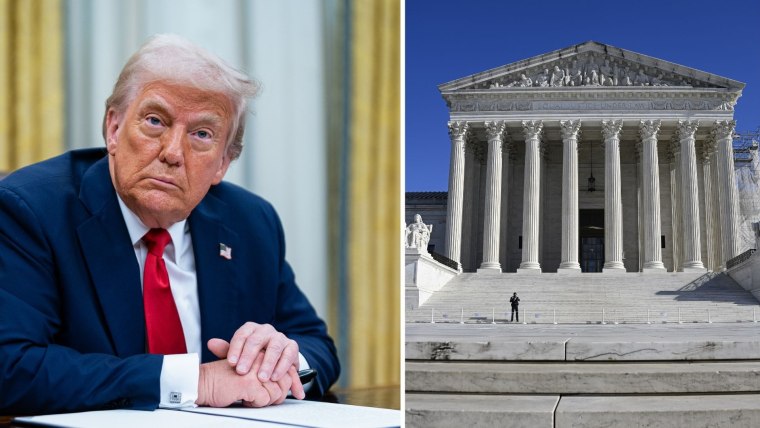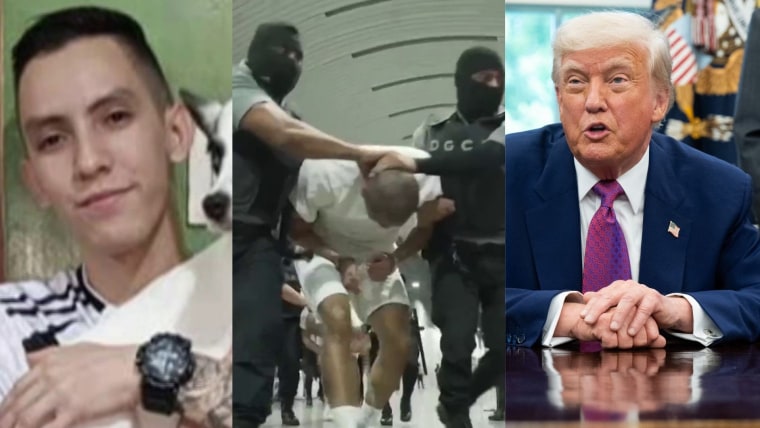Two months ago this week, the U.S. government flew hundreds of Venezuelans to a Salvadoran prison notorious for torture. The Department of Homeland Security (DHS) says their imprisonment relays “a clear message to criminal illegal aliens: LEAVE NOW.” But new research shows that dozens came legally and never violated any U.S. immigration laws.
This week, the Cato Institute published the most comprehensive review to date of how the roughly 240 Venezuelans expelled on March 15 came to the United States. We found that at least 50 reported that they arrived in the United States legally before being subject to arbitrary arrest, detention and rendition to El Salvador without due process.
At least 50 reported they arrived legally before being subject to arbitrary arrest and detention.
Information about the men was not easy to obtain. The U.S. government has aggressively suppressed disclosures. It not only denied them any due process before their imprisonment, leaving no court records, but it has failed to detail any individual explanations either.
In fact, DHS has refused even to confirm who it has imprisoned there, leaving families to rely on incomplete leaks to the media to uncover the whereabouts of their loved ones. As for the men, they are being held incommunicado — with no ability to communicate with their attorneys, families or the outside world at all — so they can’t tell their stories.
We attempted to fill this void by compiling all known information about these men.
Our reporting found at least some content online relating to 174 (about two-thirds) of the men — often nothing more than a relative posting on social media pleading for support, not a narrative about how their family member traveled to the United States.
For 90 men, their method of crossing was described online. In those cases, 50 men reported that they came legally, and 40 that they entered illegally. This distribution roughly matches an earlier survey of 50 men by Reuters, which found about half had entered legally.

These legal immigrants primarily arrived through the CBP One application that the Biden administration used to direct asylum-seekers to apply at legal crossing points. Immigrants in Mexico submitted their biographic details in the app to request an appointment. If confirmed, they appeared at the appointed time for an interview.
Some of the CBP One applicants sent to El Salvador were initially detained at their interview, but two dozen were first granted parole, a legal designation that permitted them to enter, live and work legally in the United States — which they did until their arrest and imprisonment in El Salvador.
One of the now-imprisoned men entered as a tourist, and four men came through the U.S. refugee admissions program — where U.S. refugee officers believed they would face persecution abroad and officially approved them for resettlement. These refugees expected to receive a permanent legal status and a path to U.S. citizenship when they came here. Instead, they were handcuffed, detained and rendered to a foreign prison in March.
Although we are forced to rely primarily on the families for these accounts and whatever documents that the men shared with them, we have reasons to credit their versions. Several families have their relative’s CBP One appointment confirmation or refugee travel documents, which confirm their lawful entry. The government has selectively released information about some men who it wants to discredit, noting whenever possible if they entered illegally, but it has not rebutted the claims made by the legal immigrants’ families and attorneys.
These legal immigrants primarily arrived through the CBP One application that the Biden administration used to direct asylum-seekers to apply at legal crossing points.
For instance, Jerce Reyes Barrios — a former Venezuelan professional soccer player — came to the United States with advanced permission via a CBP One appointment (confirmation of which his attorney still has). In response, a DHS official said Reyes Barrios “was in the country illegally,” but this doesn’t explain DHS’s actions: he arrived legally with a CBP One appointment in accordance with all U.S. laws. It was DHS that made him technically be “in the country illegally” by arresting him based on his tattoos and denying him entry.
DHS also disappeared Ricardo Jesus Prada Vasquez and then lied to the family about his whereabouts for weeks, only admitting to his rendition after The New York Times reported on the case. In his case, DHS said that he had “entered the United States illegally … via the CBP One App.” But it was legal to enter via the CBP One app, so he didn’t enter illegally.
DHS claims that these legal immigrants are all members of a Venezuelan gang known as Tren de Aragua (TdA). But in nearly all the men’s cases, DHS was not able to identify any crimes committed, and background checks run by Bloomberg, The New York Times and CBS News have found that the vast majority have no criminal record in the United States or abroad. Our report found only two imprisoned legal immigrants had U.S. criminal convictions — both for minor drug offenses.
DHS’ gang identification is based on little more than their tattoos. According to court documents, DHS is using a checklist to deem people “gang members” based primarily on common tattoos, clothing and other imprecise signs — which experts say are not reliable indicators of gang membership. For instance, many people who aren’t gang members wear “high-end urban street wear.” It can then label someone a gang member for being in a picture with wrongly labeled members.

Court documents also show its list of “gang tattoos,” which appear to have been pulled from random social media accounts, not from any actual gang members. As a result, DHS deemed Reyes Barrios, the soccer player, a gang member based on a tattoo of the logo of Real Madrid, his favorite soccer team, and a picture of him holding his hand in the “I love you” sign.
The fact that so many of these imprisoned people came legally highlights an important feature of the Trump administration’s mass deportation policy: No one is off limits. DHS is arresting, detaining and expelling legal immigrants: student visa holders, tourists, refugees, parolees and even legal permanent residents who have no criminal records. In this case, it went further: to imprison them.
The Constitution guarantees all people — regardless of citizenship — due process, free speech and other rights. DHS’ refusal to respect those rights is ruining America’s image as a land of freedom and the rule of law. Once that image is lost, it may take generations to recover.
